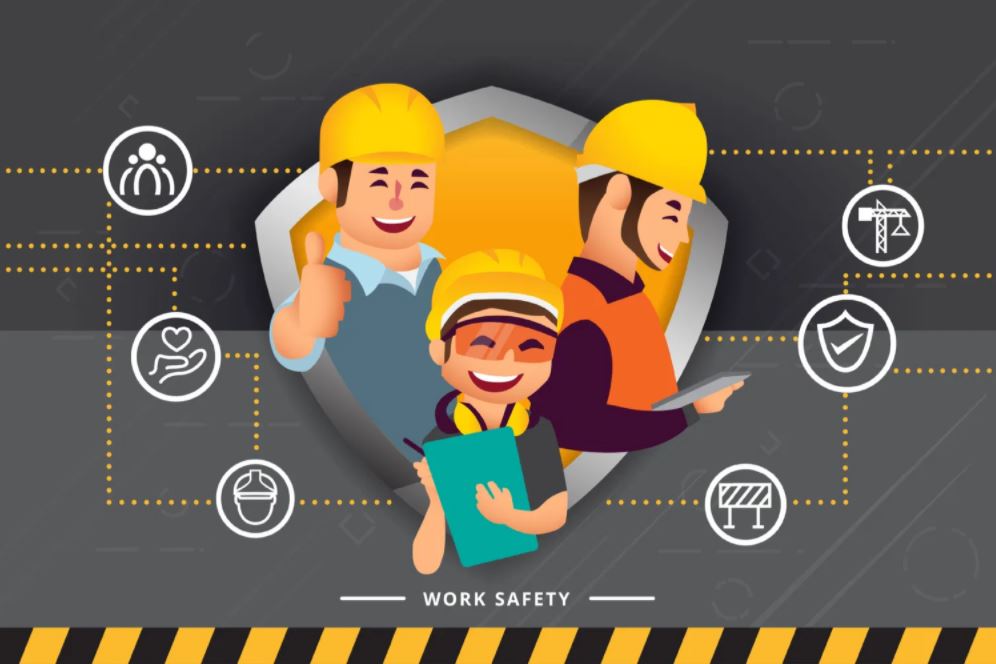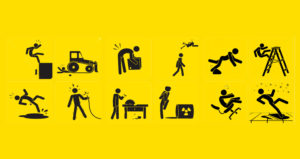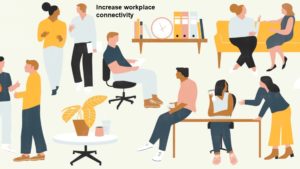Workplace safety, no matter the industry, should be a top priority for any company. Keeping workers safe and comfortable means seeking a delicate balance between building surveillance while preserving a healthy degree of privacy. With the rise of new technology, new opportunities for problems and accidents are emerging, but also opportunities for solutions. It is ultimately up to facility managers (FMs) to ensure that the organisation is aware of how to prepare for the worst while mitigating day-to-day risks. Although there are new techniques that FMs should introduce to boost protection during the COVID-19 pandemic, there are still pre-existing threats that can be tackled using much of the same technologies already being used to keep post-coronavirus work safe.
Why do workplace hazards exist?
Many items may be deemed a threat to the workplace. According to the Canadian Centre for Occupational Health and Safety, a threat is any cause of possible damage, damage or adverse health effects to anyone or something. The keyword is “potential,” so it’s necessary to understand the factors that might lead to an accident or injury. Unfortunately, occupational hazards are normal occurrences.
Workplace hazards happen due to a culmination of several issues:
- Lack of transparency and communication around potential risks
- Being lenient on safety procedures
- Unsafe working conditions
- Lack of training
- An apathetic workplace culture
- Workplace distraction (e.g., noise, notifications, unprofessionalism, etc.)
There are all sorts of reasons why workplace accidents and incidents happen. With various events happening at an office or worksite at any given time, mistakes are bound to occur. There are several things seen in existing technology which helps to improve the safety of workplace across the board which is a good news for everyone.
Increase workplace connectivity
One of the essential components of reducing occupational hazards is to provide a pulse on any part of the work environment. If workers have a better understanding of how things work as a whole — like workers in a heavy machinery manufacturing plant, for example — the risk of an accident is significantly reduced. How can workers achieve a deeper understanding of how the work place works as a whole? Sensors are a good option. This technology will help link the physical and digital workspaces together. Sensor technology can bridge the gap between teams, equipment and other components of the company and keep everyone in the loop about what’s going on at any given time. If workers are more aware of the company’s working environment through sensor insight, they can prevent accidents from occurring. For example, a company can install sensors in selected areas of the workplace that alert the appropriate departments when anything needs to be handled before an accident occurs. Another solution may be to monitor the physical condition of workers using desk sensors.
Leverage workplace software to plan for emergencies
A major part of ensuring protection at work requires careful preparation. You can prevent accidents or incidents from occurring, but the fact is that incidents can still occur. So it’s best to be prepared if and when an emergency occurs. Thanks to its level of detail and precision, orkplace software will help you prepare an emergency evacuation plan. Workplace apps may be used by FMs to define where health and safety features are, such as emergency exits and meeting areas, so there is no uncertainty as to where to locate these services in the event of an emergency. FMs may also use on-site tools to find emergency supplies such as fire extinguishers, flashlights, repair kits and more. Workplace software not only makes it easier to prepare for an emergency, but it’s easier to keep workers in the loop because it’s still up-to – date and available to all.
Reduce cyberattacks with security software
With the transition to cloud-based computing systems, there is a risk of cyber attacks from unsuspected hackers. Cyberattacks are not only risky, they are costly. In reality, the estimated cost of a breach of data is expected to surpass USD 150 million in 2020. Not only will your data (and your customer, if applicable) be put at risk, but also you run the risk of having to pay any recovery costs associated with an attack. This could be detrimental to a company. In addition, with 95% of cyber security breaches caused by human error, businesses cannot afford to have a secure security system in place. To keep your company’s data and your client’s data protected, investing in security software to prevent cyber-attacks is a must. Not only does a cloud-based data protection framework keep your company’s data archives stable, it also ensures that your data collection process is safer.
Create a comfortable work environment with ergonomic furniture
No one is unfamiliar with the dangers of sitting all day long. 3.2 million people die every year due to complications linked to physical inactivity. For an average person sitting 12 hours a day, this knowledge is surprising. Therefore, the incorporation of ergonomic furniture into the workplace may have a significant effect on the health (physical and mental) of the employees.
There are many advantages of ergonomic furniture:
- Improve your posture back
- Improved circulation
- Higher levels of blood sugar
- Improving efficiency
- Enhance your memory
Ergonomic furniture, such as standing tables, ergonomic chairs and better lighting, will provide workers with a convenient work place so that they can feel their best all day.
Technology can improve workplace safety when applied correctly. The way people work has changed drastically and businesses need to adapt to improve safety at work. The elimination of occupational hazards begins with careful preparation and efficient communication. Accidents are bound to happen — we are human, after all — but the technologies available to us can do a great deal to reduce these accidents.
How technology is reshaping the modern workplace
1. Changing the way business communicates:
Technology has changed the way people used to interact in modern workplaces. The arrival of smartphones, social networking sites and messaging apps has brought connectivity to a new stage. Communication between workers or management to subordinates, or management to management has become swift, immediate, more deliberate, collaborative and cohesive.
2.More efficient company activities:
Businesses today rely on business efficiency software that offers many tools to address the complexities of day-to-day plan execution. It enables managers to track progress more effectively during and process of target completion and to provide immediate encouragement or guidance to keep results and deadlines on track. This is yet another example of the role of technology in enhancing the efficiency and performance of organisations. Access to modern technologies has made it possible for workers to do things more efficiently with precision and has helped to discourage workplace disruptions, thus increasing efficiency
3.Helping with Cost Control:
The ultimate aim of any organisation is to increase profitability. Thanks to advanced technical software, businesses are now being fiscally sound, as these developments are proving to be more cost-effective. Every workplace has a number of tasks that require committed people to manage. It ultimately holds the costs high. This expense can also be minimised by installing SaaS tools in the workplace. Using SaaS tools, we can remove the manual handling of a task by automating where possible and concentrating on the integration of different tasks. Not only do automated processes provide more reliable results, and help keep every record with the date and time indicated.
4.Keeping the company secure:
Company workplaces at all levels need a high degree of protection for their safe operation. Technology plays a critical role in this. It offers end-to – end hardware and software-based data protection such that only approved parties can retrieve and read it. Fingerprint and facial recognition capabilities provide an additional degree of protection to the systems at work. Companies use advanced technologies and incorporate security tools and algorithms to ensure that sensitive information is available to the right people and is safe from malicious hacking attempts.
5.Keeping the company secure: Company
workplaces at all levels need a high degree of protection for their safe operation. Technology plays a critical role in this. It offers end-to – end hardware and software-based data protection such that only approved parties can retrieve and read it. Fingerprint and facial recognition capabilities provide an additional degree of protection to the systems at work. Companies use advanced technologies and incorporate security tools and algorithms to ensure that sensitive information is available to the right people and is safe from malicious hacking attempts.




